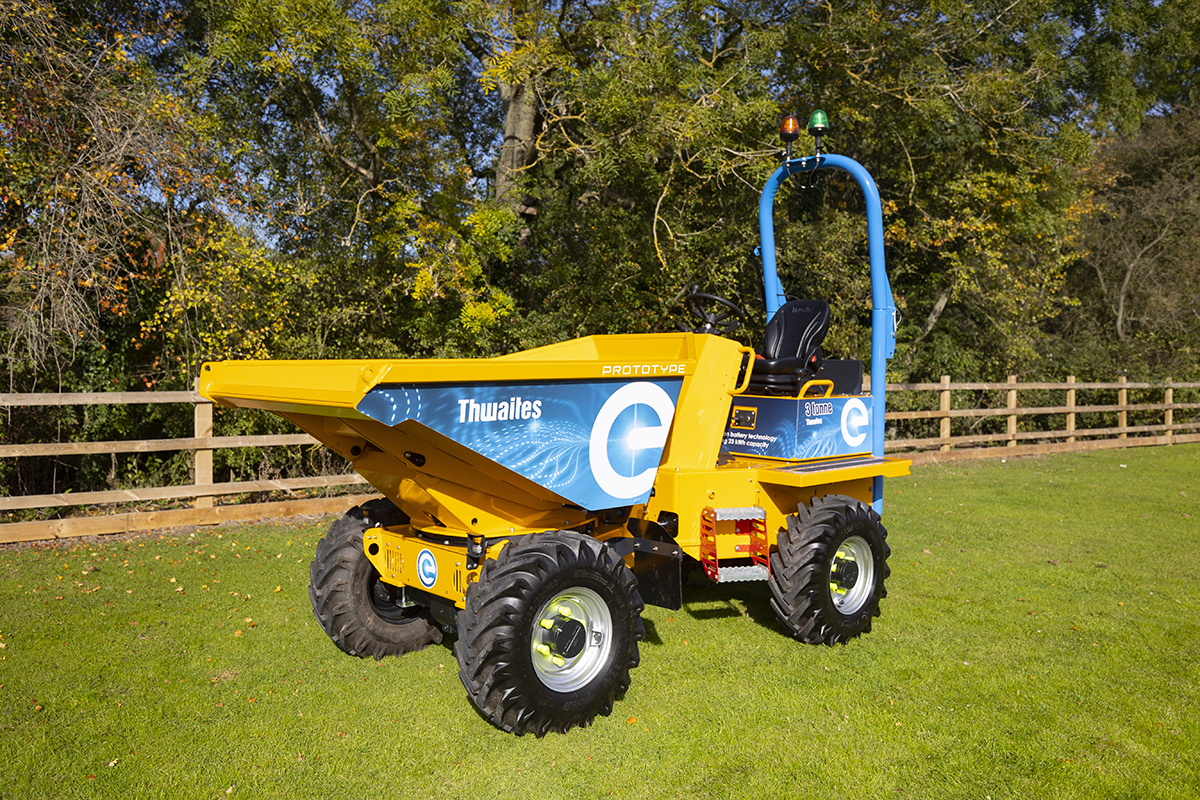THWAITES is displaying the all-new electric 3-tonne dumper at bauma 2022.
The manufacturer said the machine has been designed with contractors and hirers in mind, offering the ‘same build quality, robust design and engineering excellence’ that is ubiquitous across the firm’s range.
The machine being displayed at bauma is an advanced concept machine, with the go to market version set to become available in 2023.
Thwaites general sales manager, Andy Sabin, said, “As the demand for cleaner alternative fuel sources grows, we are keen to ensure we offer a quality product that delivers for our customers, their clients and the environment.”
Four lithium-ion batteries, operating at 48V, are fitted to the model. Each battery is rated at 5.75kWh. Two electric motors – one for traction, one for the hydraulic services – are described as giving the operator the ‘control and manoeuvrability expected from a Thwaites dumper’.
The electric drive dumper has a similar unladen weight when compared to the diesel/hydrostatic version. The main battery pack and driveline components now sit low in the rear chassis, lowering the centre of gravity when compared to the hydrostatic drive machine.
Thwaites added that the battery pack will complete a full 8-hour shift of ‘normal site operation’ from a single charge. The standard on-board 3.4kW battery charger can charge the pack from 0-100% in 8 hours. Optional off-board chargers rated at 7kW (single-phase) and 22kW (three-phase) have charge times of four and two hours respectively.
Andy Sabin added, “We are delighted to be able to offer this all electric 3-tonne dumper for consideration at this year’s bauma event. Available for both the UK and export market, the machine will provide for the rental market, a cleaner, quieter, alternative, giving contractors options to use the machine in more urban refurbishment settings.
“In addition, the new, all electric dumper is compliant with the growing number of authorities and bodies that operate low emission zones.”











